Asteroids
Printable
version
April
6, 2000
Announcements
-
Quiz
#2 in discussion section next week
-
Covers
Chapters 18.1-18.6, 10,11,12
-
Homework
5 due next Tuesday
-
Observing
project:
-
Daylight
savings time this past weekend
-
Next
Honors section:
-
THIS
Wed April 5 (weather permitting) at 8:00 pm
Asteroids
Preview
-
Discovery
of asteroids
-
Naming
convention
-
Distribution
-
Up
close and personal
-
When
astroids land on Earth
-
Types
of metorites
-
The
big one
Discovery
of Asteroids
-
Gap
in planets between Mars and Jupiter
-
Missing
planet?
-
No,
asteroids
-
In
late 1700's, search for planet
-
German
"Celestial Police"
-
Sicilian
Giuseppe Piazzi beat them to it
-
Had
been looking at stars
-
saw
one move over the course of a few days
-
Called
it Ceres after patron goddess of Sicily
-
Ceres
is the largest asteroid but not the missing planet
-
minor
planet
-
P =
4.6 years
-
a =
2.77 AU
-
r =
918 km
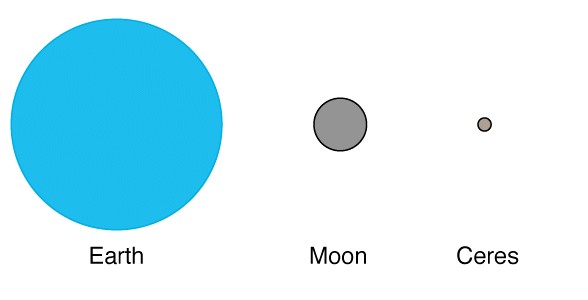
Early
Asteroid Work
-
Second astreroid discovered
1802 by Heinrich Olbers
-
Juno 1804
-
Vesta 1807
-
A couple 100 by mid 1800s
-
Max Wolf 1891 started using
photographs
-
asteroids leave streaks
-
discovered 228 asteroids
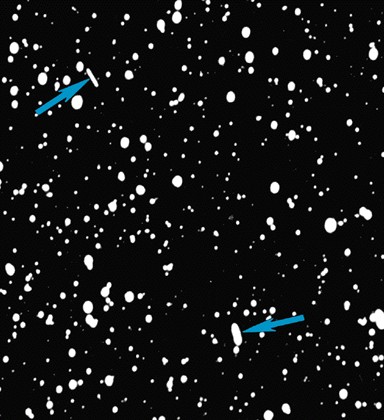
Naming
Asteroids
-
If you discover an asteroid,
-
First you get a provisional
name, e.g.: 2000 GA
-
2000 Year
-
G for first half of April,
B would be second half of Jan
-
A for first one discovered
in that time period
-
If it is seen again on four
successive opositions, it is real
-
You get an official number
-
You get to name it
-
1 Ceres
-
2 Palas ...
-
3834 Zappafrank (found in
1980)
Distribution
of Asteroids
-
Most
asteroids found between Mars and Jupiter
-
Once
though to be remenant of "missing planet"
-
Probably
just left over from formation of solar system
-
All
asteroids put together would be only 1500 km in diameter
-
Computer
simulations: Jupiter influcenced formation of asteroid belt
-
without
Jupiter, another Earth-sized planet may have formed
-
Jupiter's
gravity disrupts orbits, throws asteroids out if they get to close
-
crack
the whip phenomenon
-
A Mars-sized
planet may have formed
-
kicked
1862 Apollo, 1566 Icarus out of belt but not out of solar system
-
What
happened to Mars-sized object?
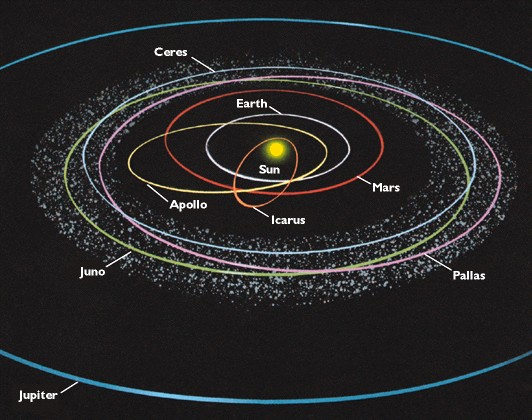
Lagrange
and Kirkwood
-
In 1772 Joseph Louis Lagrange
predicted special stable points at intervals around a planet's orbit
-
In 1906 clumps of asteroids
were discovered at Jupiter's L4 and L5
points.
-
In 1867 Daniel Kirkwood discovered
gaps in the asteroid belt
-
P2 = a3
-
Gaps in distance (a) correspond
to gaps in period (P)
-
Gaps in period are simple
fractions of Jupiter's period
-
e.g. 1/3
-
asteroids with these orbits
are disturbed so much, they get kicked out of the solar system
-
WHY?
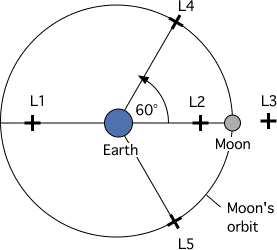
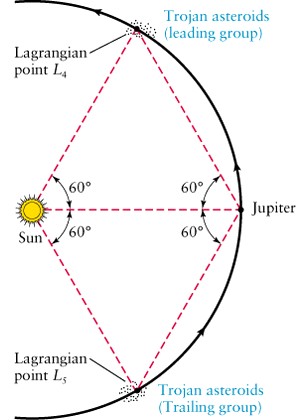
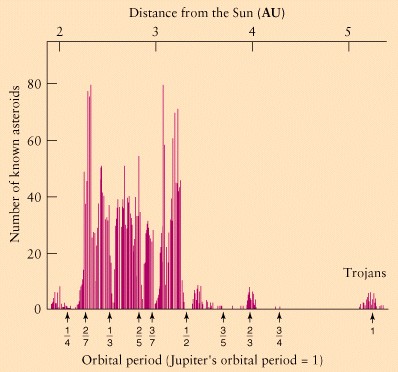
Asteroids
up close and personal
-
Asteroids are less than 1000
km wide
-
There is an average of 106
km between asteroids
-
space probes don't need to
worry about hitting asteroids
-
More asteroids earlier in
history of solar system, lots of time
-
Ateroids to collide
-
Chunks stay around in Hirayama
families
-
To get a good view of an
asteroid, you have to visit
-
Rotate every 5-20 hours
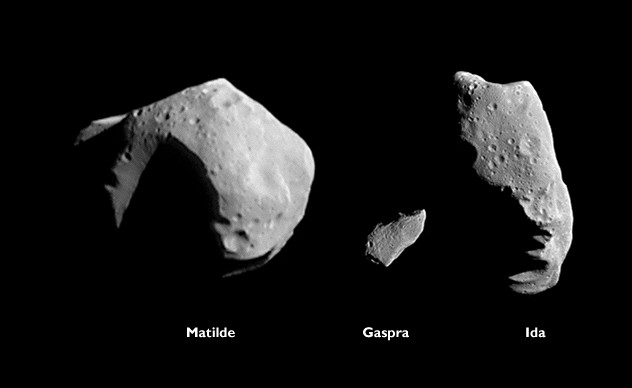
Ida and its mini moon
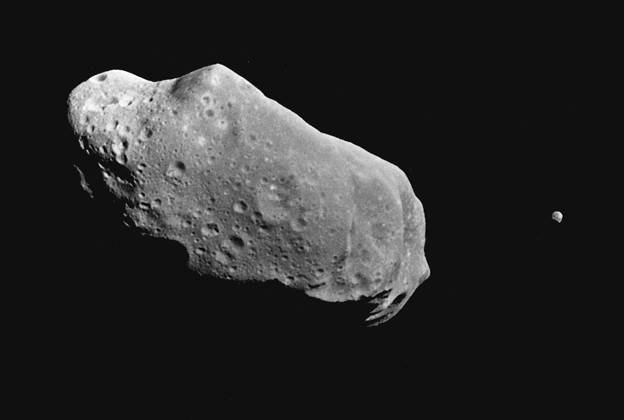
Eros
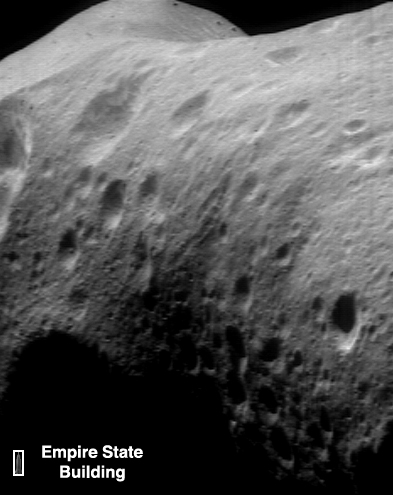
Asteroids
hitting the Earth
-
Small
asteroids are called Meteroids
-
If
they make it to Earth they usually burn up in the atmosphere
-
Meteors
that land on the ground are called Meteorites
-
Result
of impact is usually an impact crater
Barringer
Crater, Arizona
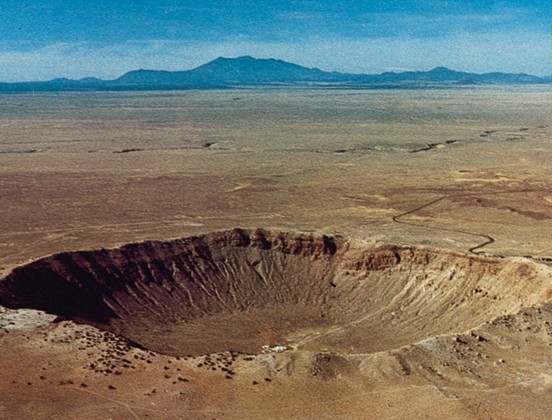
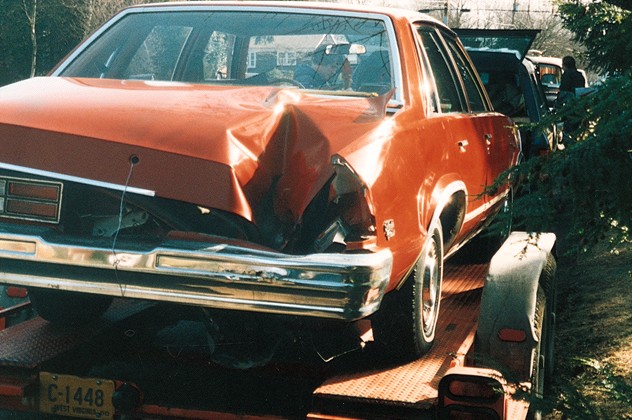
Types
of Meteorites
-
Stony
-
rock
+ small amounts of iron
-
Stony
Iron
-
rock
+ large amounts of iron
-
Iron
-
Widmanstatten
Patterns
-
Iron
that cools over a long period of time
-
Carbonaceuos
Chondrite
-
source
of organic compounds
Stony
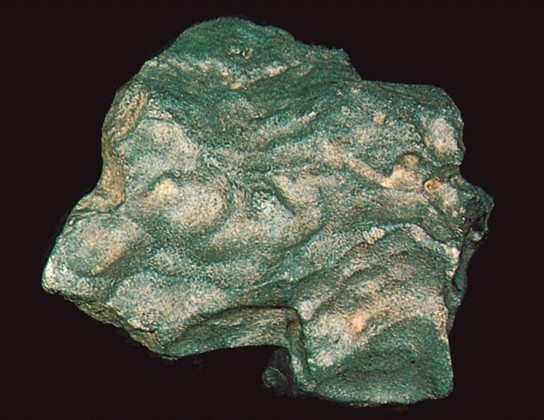
Stony
Iron
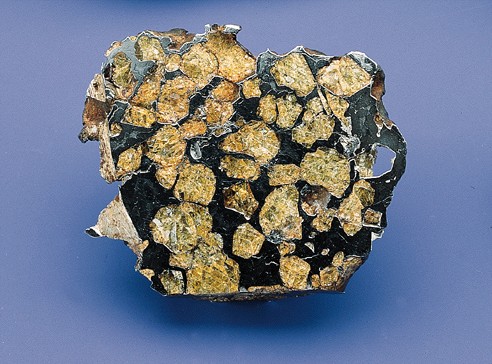
Iron
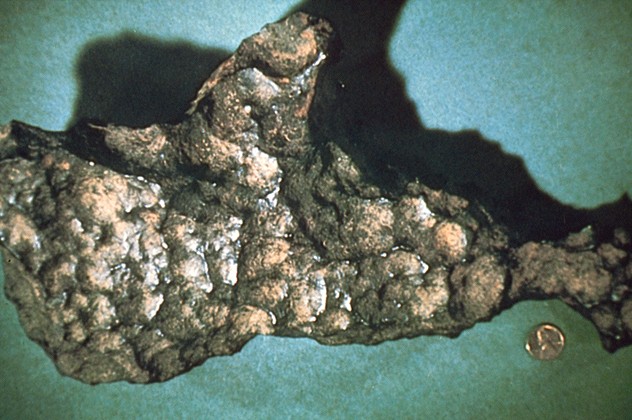
Widmanstatten
paterns in iron meteorite
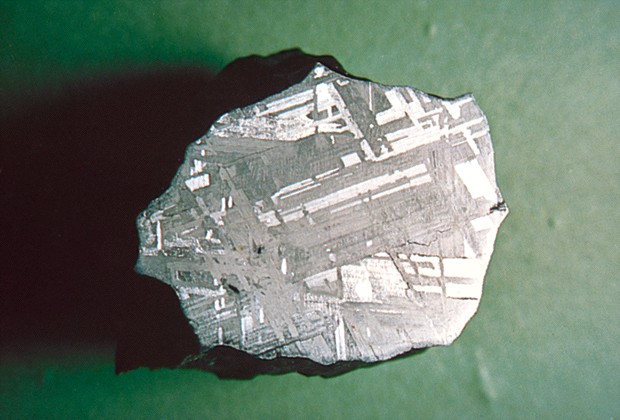
Carbonaceuos
Chondrite
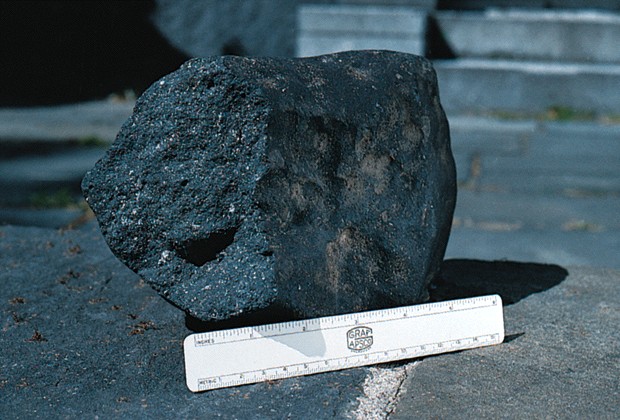
The
BIG ONE
-
Layer
of iridium clay around world deposited 65 million years ago
-
Many
iron meteorites contain irridium
-
2/3
of all living species became extinct 65 million years ago
-
A very
large meteorite may have struck the near the Yucatan peninsula
-
impact
may have kicked up dust that obscured the sun
-
plants
died
-
large,
cold blooded animals died
-
mammals
survived
-
Can
it happen again?
Irridium
rich clay
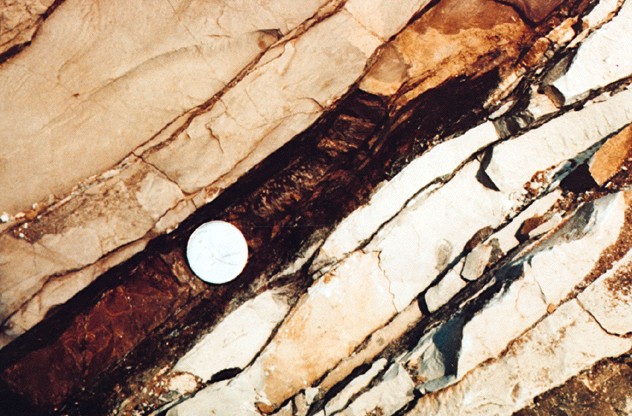
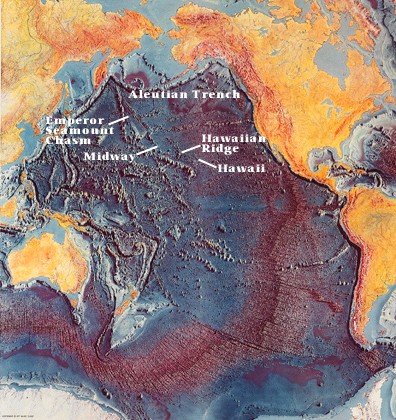
Asteroids
Summary
-
Discovery
of asteroids
-
Naming
convention
-
Distribution
-
Up
close and personal
-
When
astroids land on Earth
-
Types
of metorites
-
The
big one



















